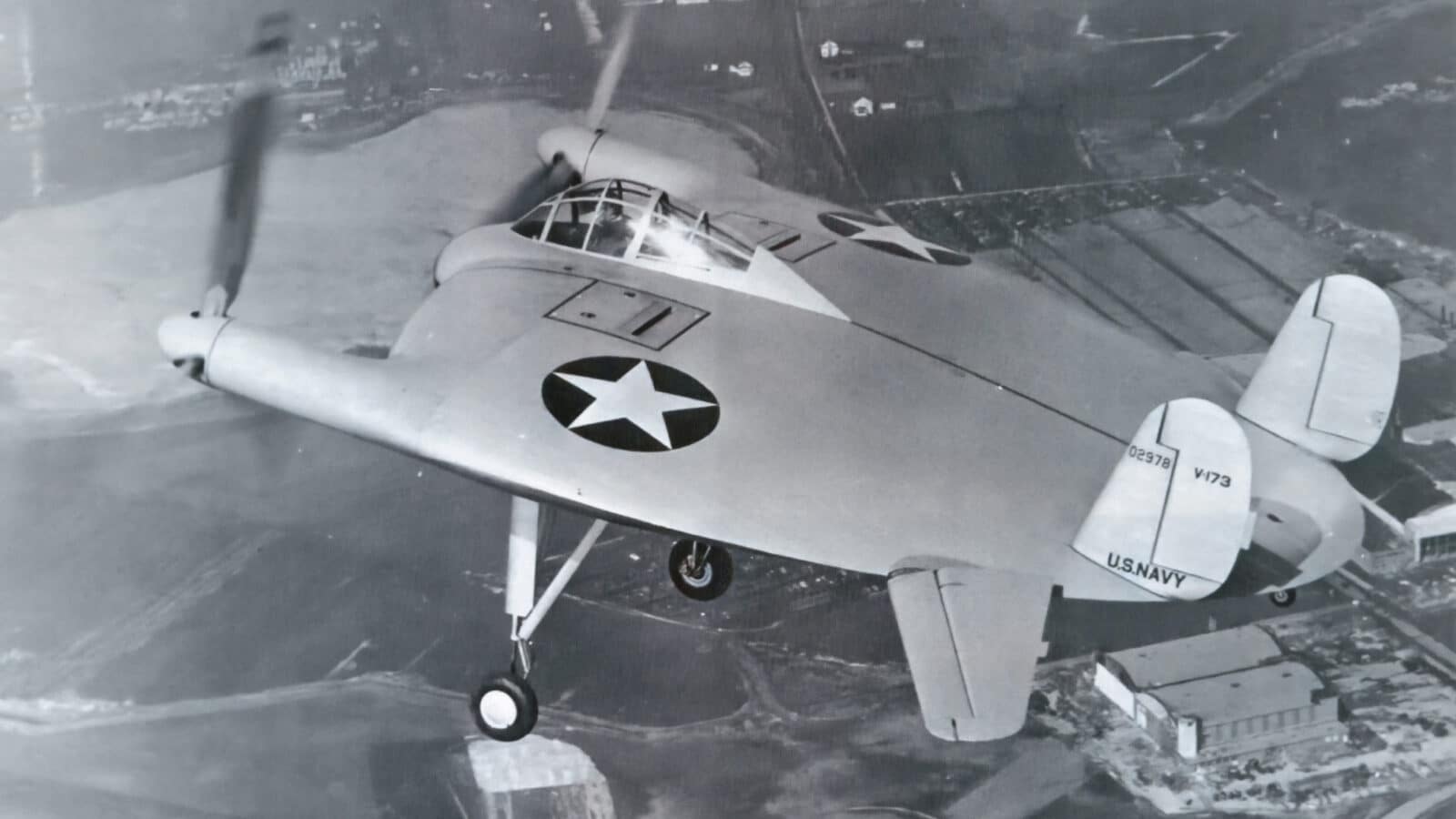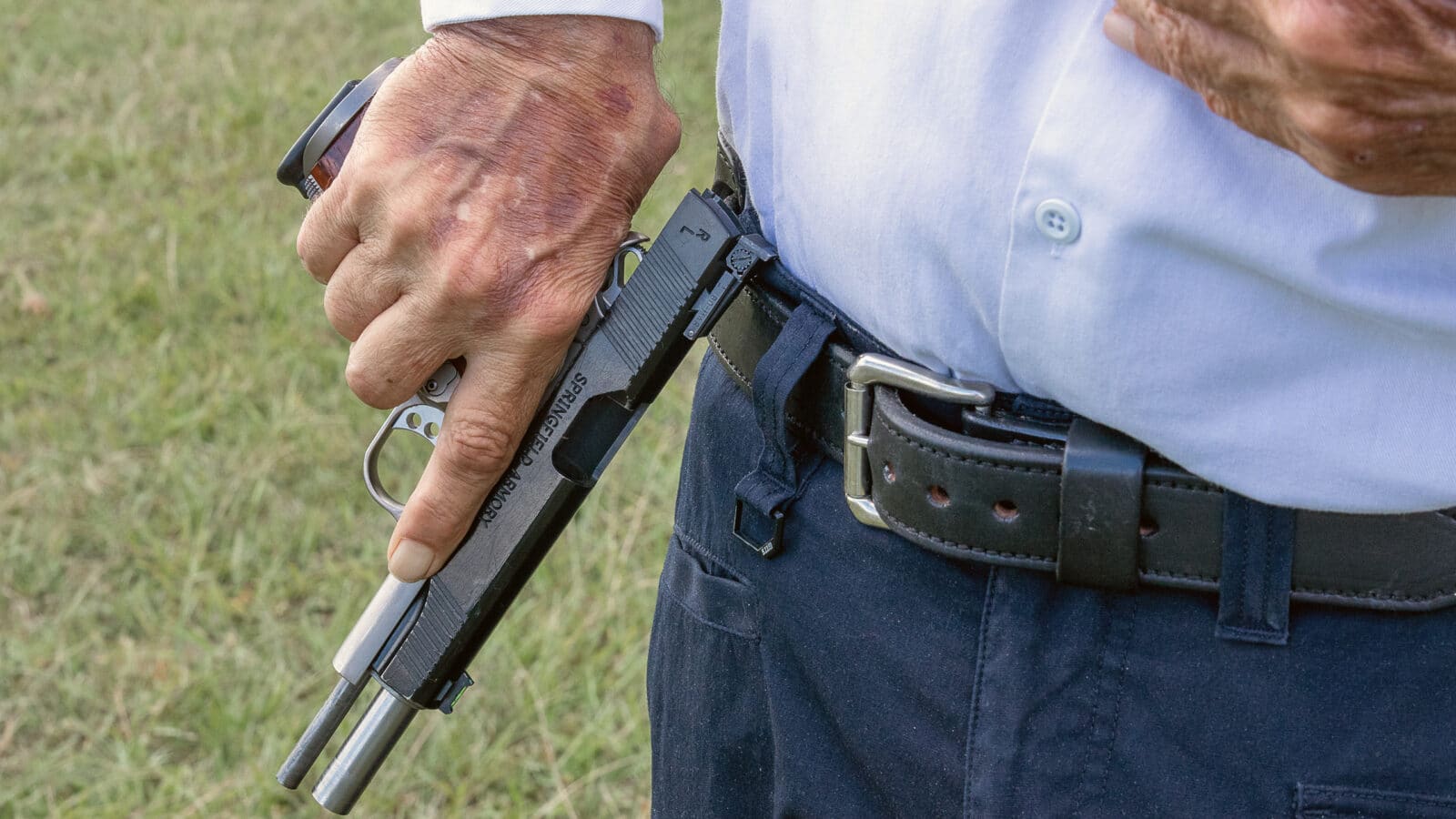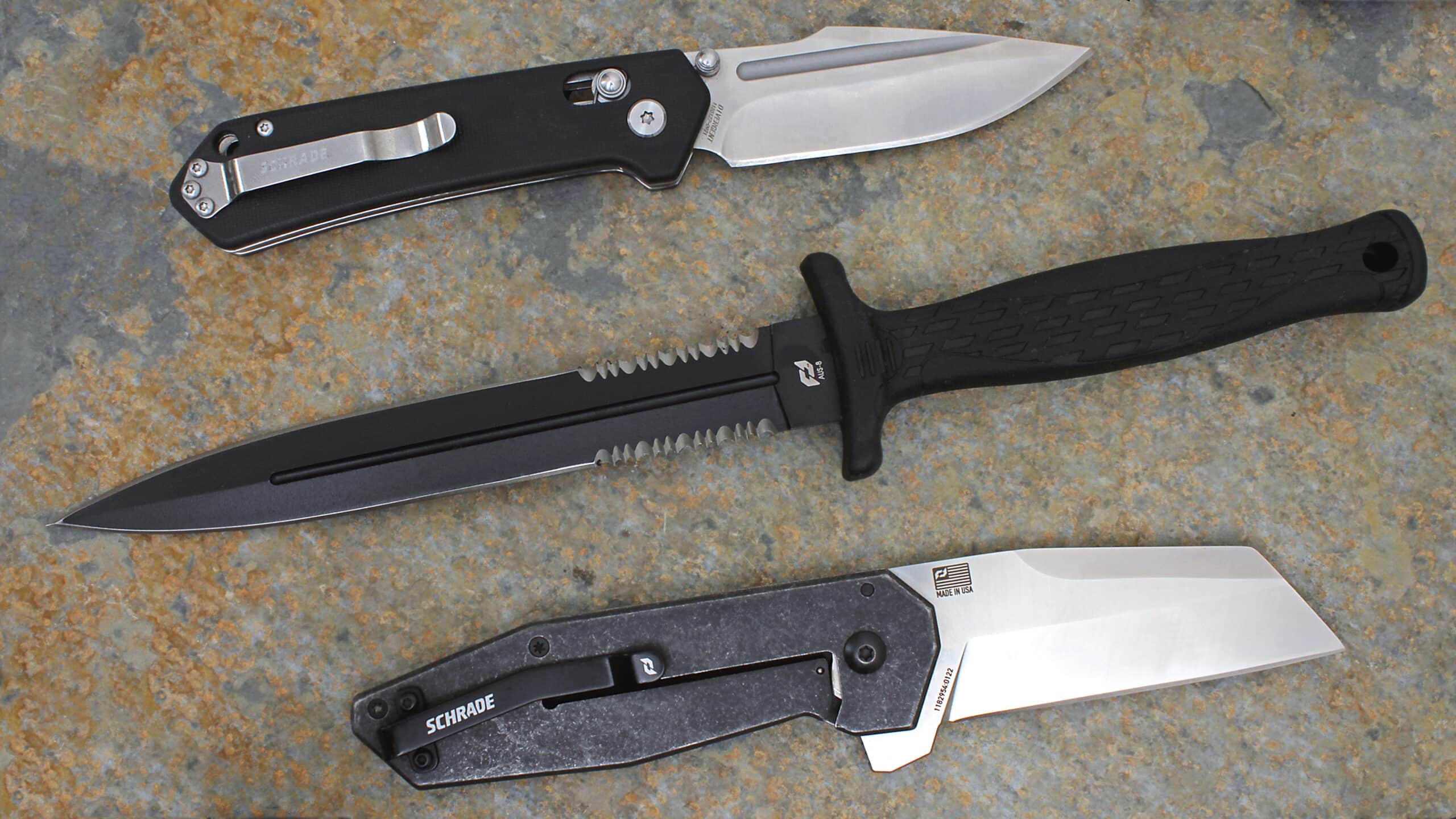Humans haven’t been flying for very long when you look at the totality of history. From the Wright Brothers to today, it’s barely been more than a century — yet during that time period there have been many experiments and advancements made. In today’s article, Friedrich Seiltgen describes America’s disc-shaped airplane: the Vought V-173 Flying Pancake. Looking like something out of a 1950s sci-fi movie, the V-173 originated in the 1930, with much development work being done in World War II.
In the early 1930s, aeronautical engineer Charles Zimmerman advocated discoidal aircraft, which were disc-shaped wing designs with a circular outer planform. This design was a lifting body with a short span that made up the aircraft’s fuselage. His design used two large counter-rotating propellers that would rotate slowly, creating a uniform airflow over the surface of the plane and eliminating the drag of wingtip vortices.
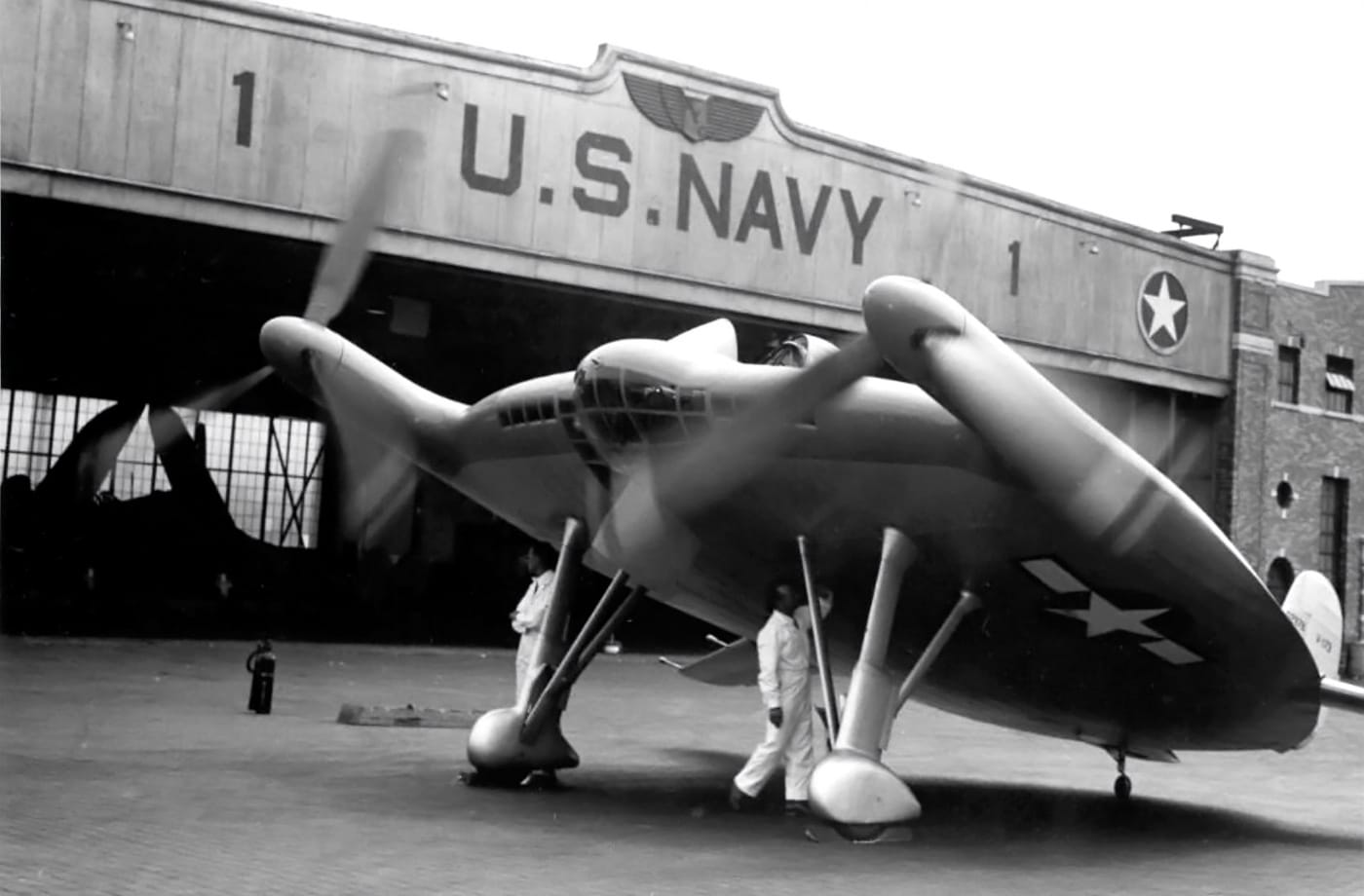
Zimmerman built a proof-of-concept aircraft, but it was underpowered and never flew. He then built a small rubber band-powered model, which showed great promise, and moved on to large-scale models of his design, including an electric-powered model.
Enter Vought Aircraft
Zimmerman worked on several projects independently and was hired by Vought Aircraft in 1937 to continue his work. The original prototype was designated the Vought V-173. The majority of the aircraft was constructed of wood and covered with canvas. However, the front part of the fuselage to the middle of the cockpit was covered in wood, and the forward cockpit structure and propeller nacelles were constructed of aluminum. It was powered by two C75 Continental 80-horsepower engines.
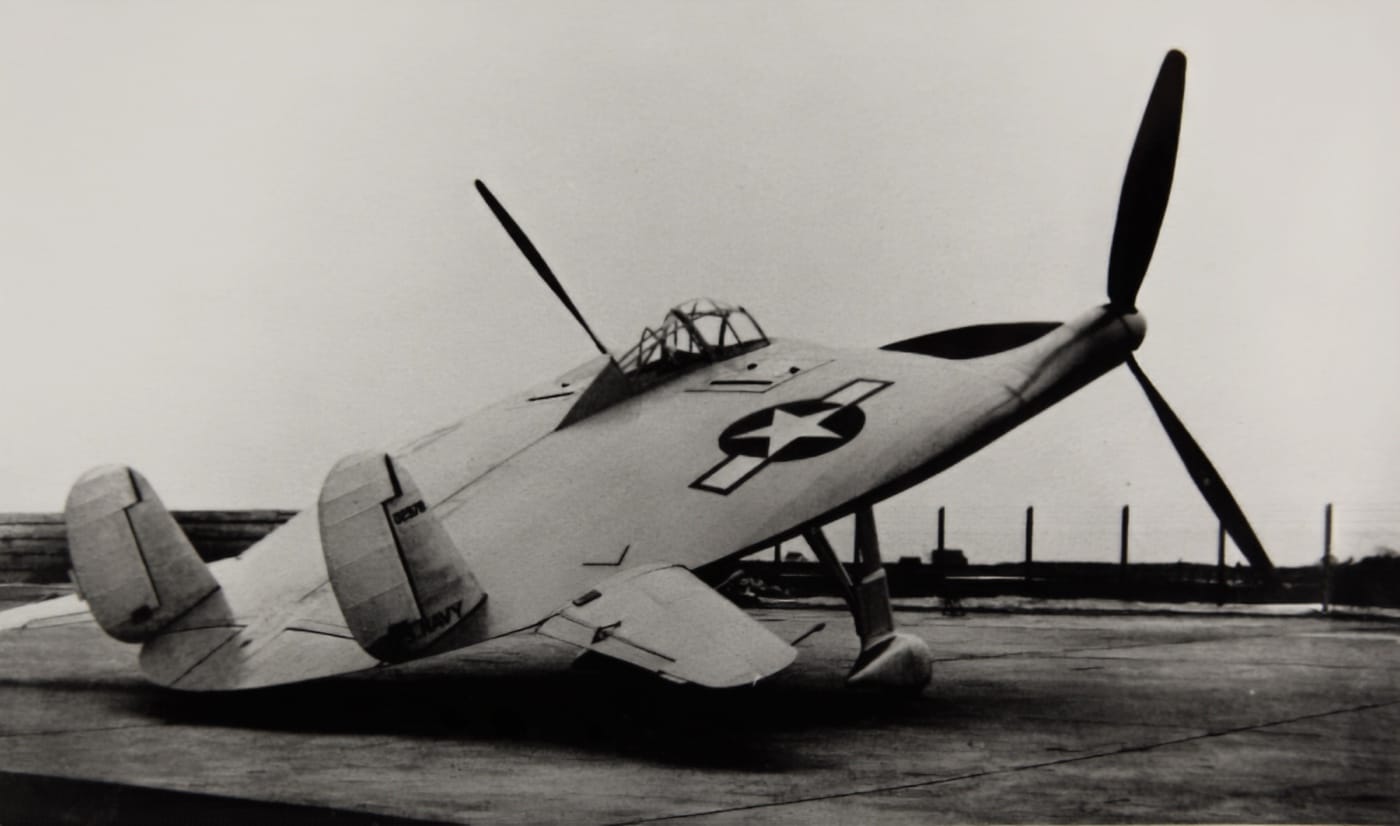
The V-173 used two vertical stabilizers at the rear of the aircraft. Attached to each side near the rear were horizontal stabilizers that acted as an aileron and an elevator known as an ailevator. The aircraft had tall fixed main landing gear, with a small tail wheel, and sat at a 22-degree nose-up angle to take advantage of the lift created by the two 16-foot, three-bladed propellers.
It was definitely a unique look.
In the Navy
While the U.S. Army Air Corps turned down the Zimmerman design, the U.S. Navy was interested in a short wingspan aircraft with a slow takeoff and landing speed that could operate from a ship. On May 4, 1940, the Navy signed a contract with Vought to produce a test aircraft designated the V-173.
On November 23, 1942, after extended taxi tests, what became known as the Flying Pancake made its first flight at Bridgeport Airport in Stratford, Connecticut. Vought’s chief test pilot, Boone Guyton, was in the cockpit.
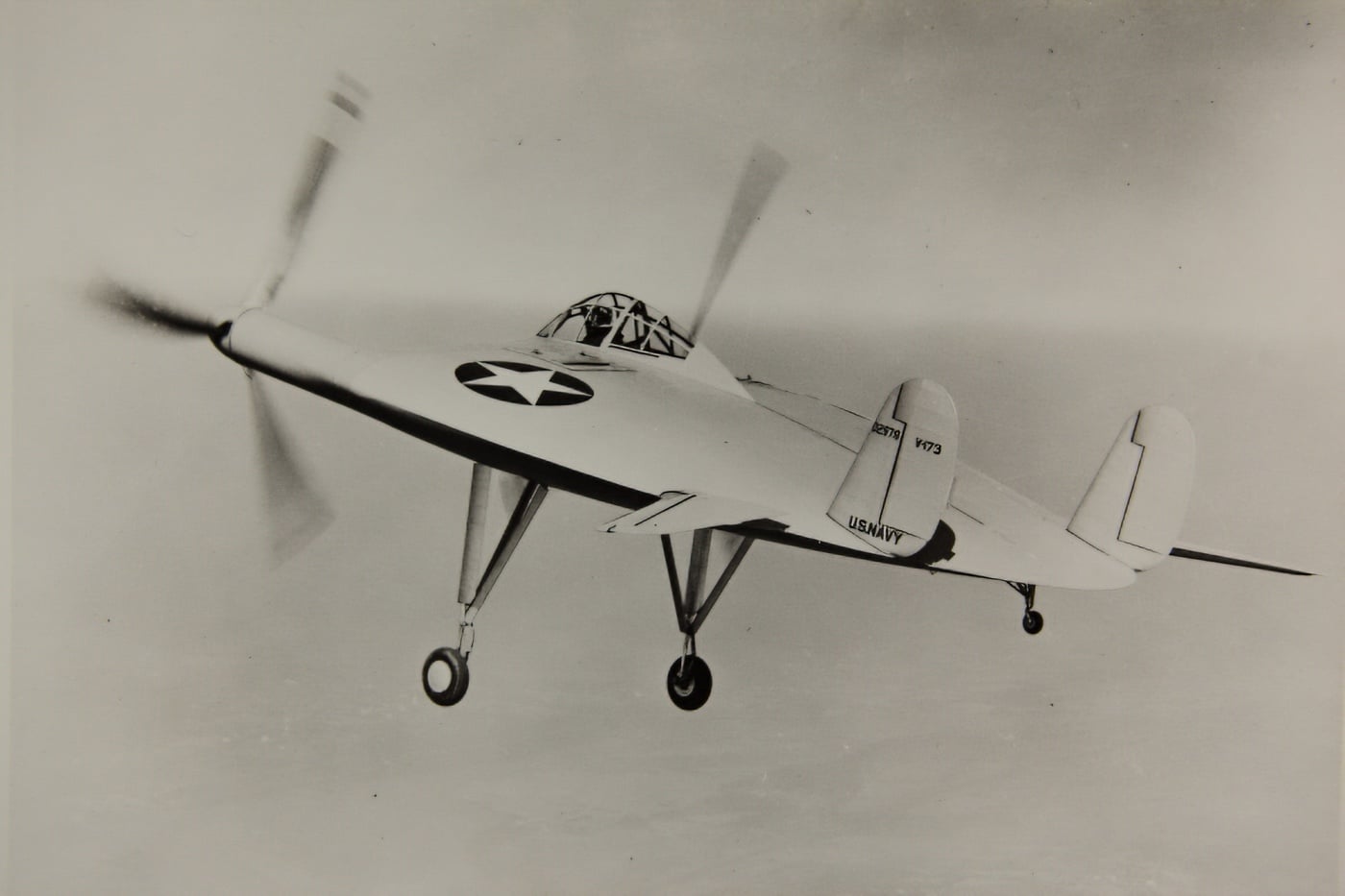
Guyton landed after a 13-minute test flight, and the debrief began. During the flight, Guyton stated the controls were heavy and thought he would have to make a forced landing. Much of this was attributed to severe vibration from the complicated gearbox that routed power via long driveshafts to the propellers.
The gearbox was known to be an issue from the start as it produced unacceptable amounts of vibration during ground testing. It caused months of delays in the aircraft’s development which had pushed back the first test flight.
Another issue was the inability to get the aircraft in level flight due to insufficient airflow over the control surfaces. Guyton also had issues with the cockpit. It was uncomfortable, and the pilot’s seat was too high, which made the clear bottom panels useless during takeoff and landing.
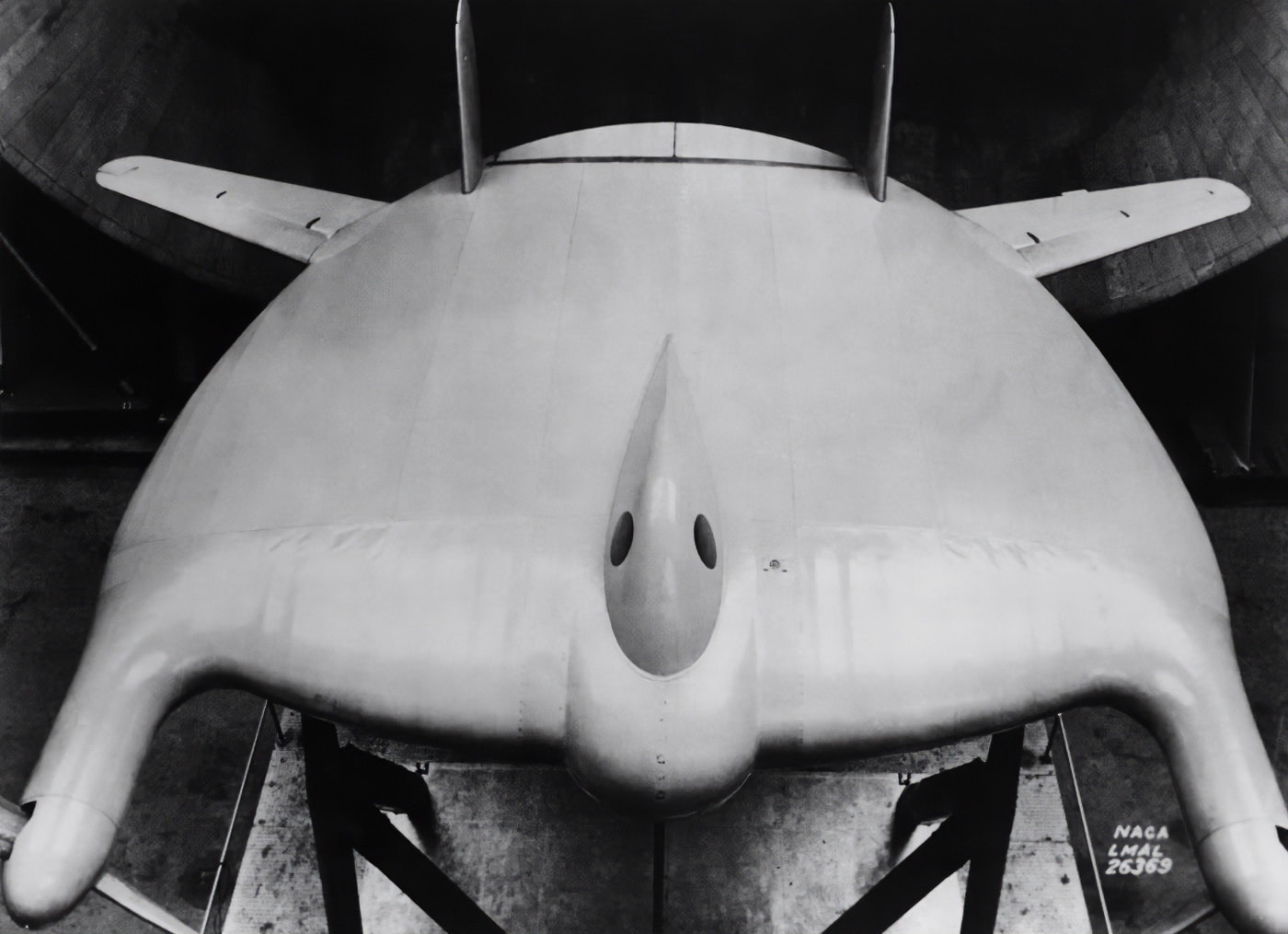
Another major issue was air getting trapped under the aircraft during the landing approach, forcing the tail up. This pushed the nose down, and the aircraft would drop suddenly as it landed, causing it to slam onto the runway and bounce back up.
Changes were made, and in 1942-43, Zimmerman’s Skimmer made another 190 test flights, causing an unknown number of UFO sightings by locals. The aircraft was also flown by Charles Lindbergh, who was impressed by its low-speed capabilities and easy handling. Both Lindbergh and Guyton discovered that they were almost unable to stall the aircraft.
A Tiny Crash
During one of the test flights, Vought test pilot Richard Burroughs was forced to make an emergency landing on a local beach.
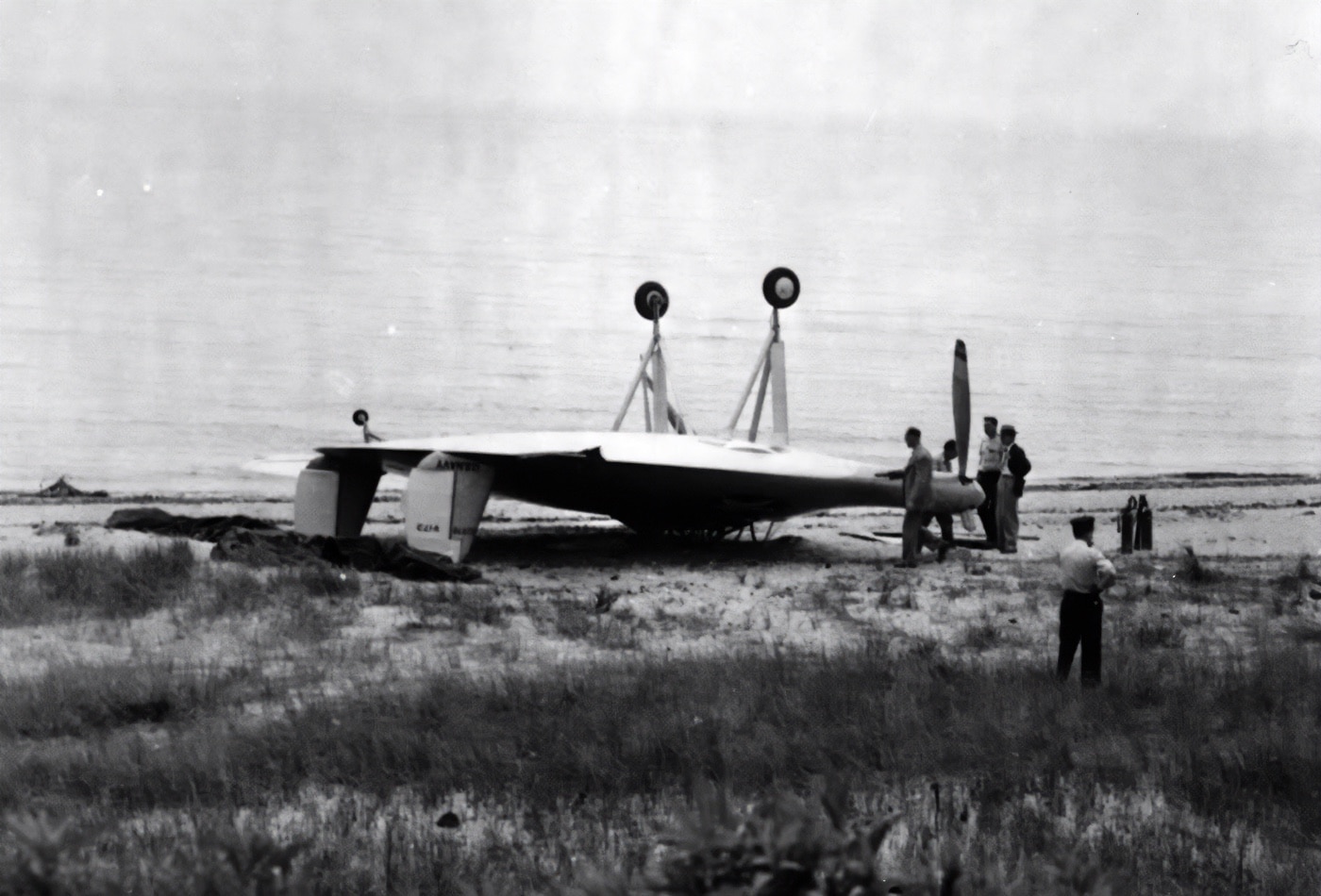
The pancake managed to make it down to the sand without issues, but unfortunately, a beachgoer was enjoying the sun where he was trying to land. Burroughs braked hard to avoid hitting him, and the pancake flipped over on its back. Fortunately, both Burroughs and the aircraft were uninjured.
V-173 Specifications
- Wingspan: 23 feet 4 inches
- Length: 26 feet 8 inches
- Height: 14 feet 9 inches
- Wing Area: 427 square feet
- Gross Weight: 2,258 pounds
- Maximum Speed: 138 miles per hour
- Time to Climb: 7 minutes (5,000 feet)
Vought XF5U Flapjack
With the end of the V-173 testing, the plane could take off under 200 feet under normal conditions and achieve vertical takeoff with a 25-knot headwind. The project moved on to the next phase with the XF5U, also known as The Flying Flapjack program. The new aircraft was more complicated and was constructed using an aluminum frame and covered with Metalite, a layer of balsa wood bonded between thin layers of aluminum.
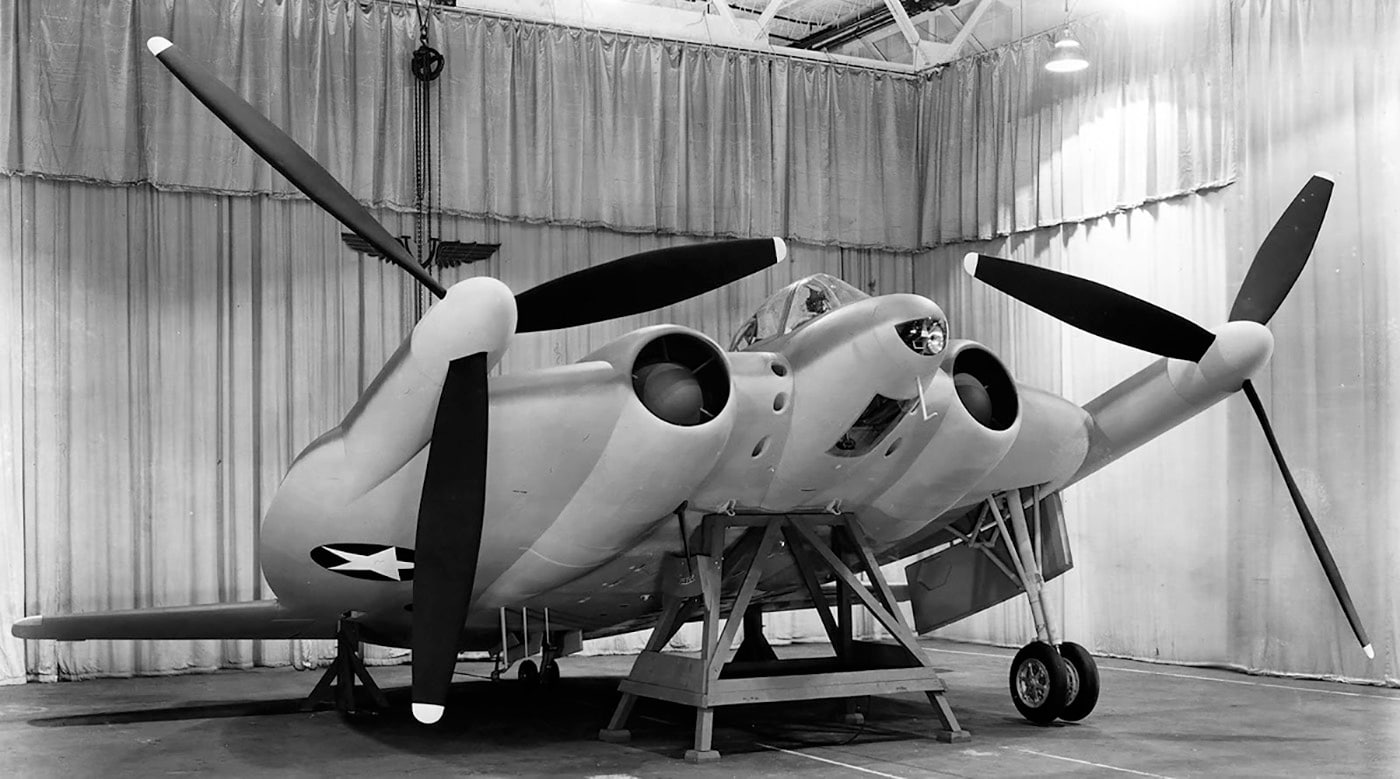
Vought constructed a wooden mockup of the XF5U for inspection by the Bureau of Aeronautics in June 1943. After a few revisions, it was approved in August 1943, but the two-aircraft contract was not signed until July 1944.
The XF5U was much improved when compared to the V-173. The new plane was powered by two Pratt & Whitney R-2000-7 1,350 hp engines placed in the fuselage. Further, it was equipped with retractable landing gear and a tail hook for carrier operations.
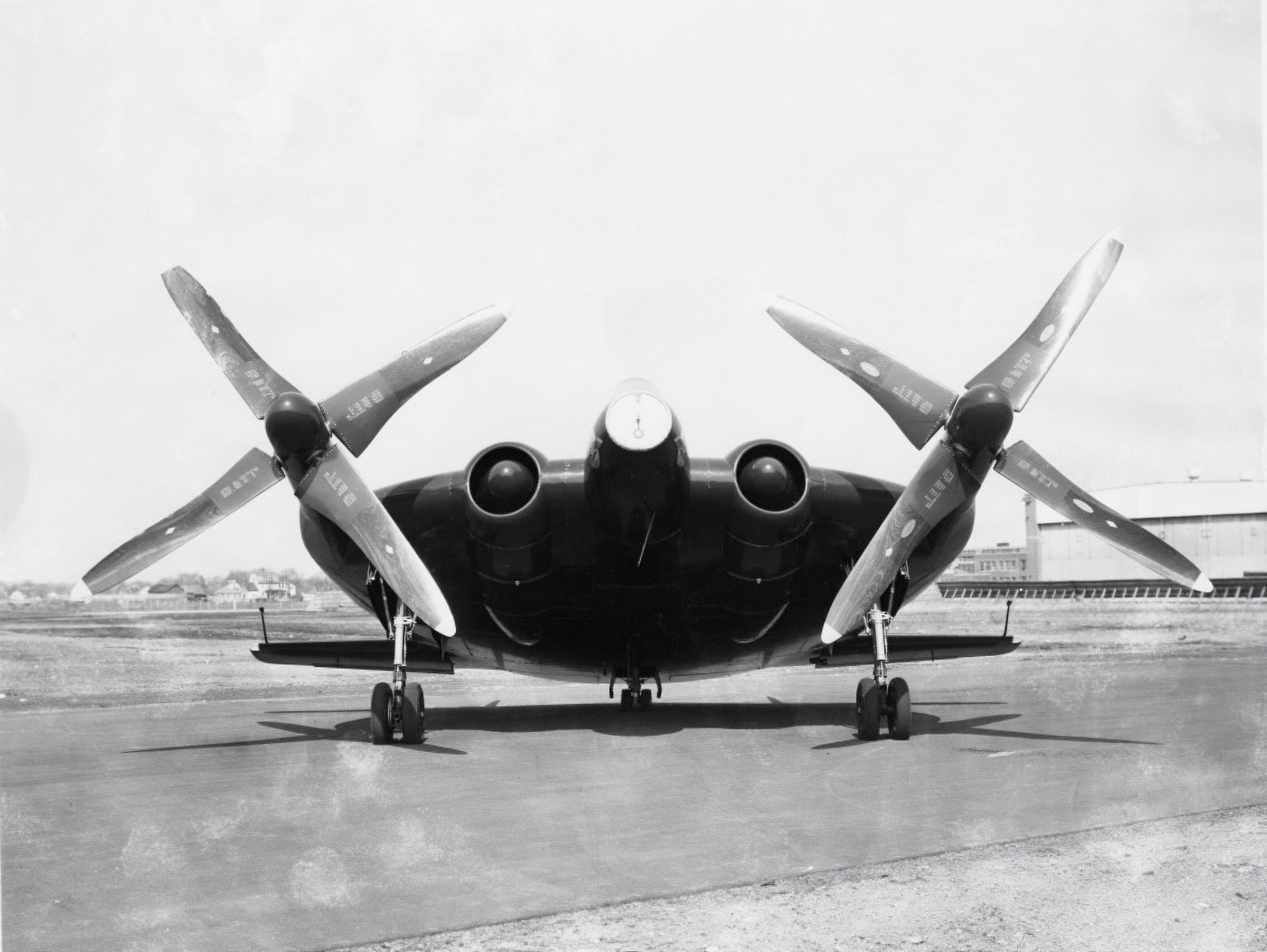
Unlike the purely experimental V-173, the XF5U was intended for development into a carrier based fighter. It was therefore slated for armament consisting of six .50-caliber AN/M2 machine guns (the aviation version of the M2 heavy machine gun.) Additionally, the plane was to have a pair of hardpoints underneath with a 1,000-pound ordnance capacity on each.
As with the V-173, the landing gear was tall, and the aircraft had an 18.7-degree nose-up angle.
The Flapjack Can’t Fly
The first of two XF5Us rolled off the line in June 1945 and began ground testing shortly after. Flight testing was delayed due to the inability to obtain the articulated propellers, some gearbox issues, and vibration problems. The XF5U only made a few short hops on the runway and never attained actual flight.
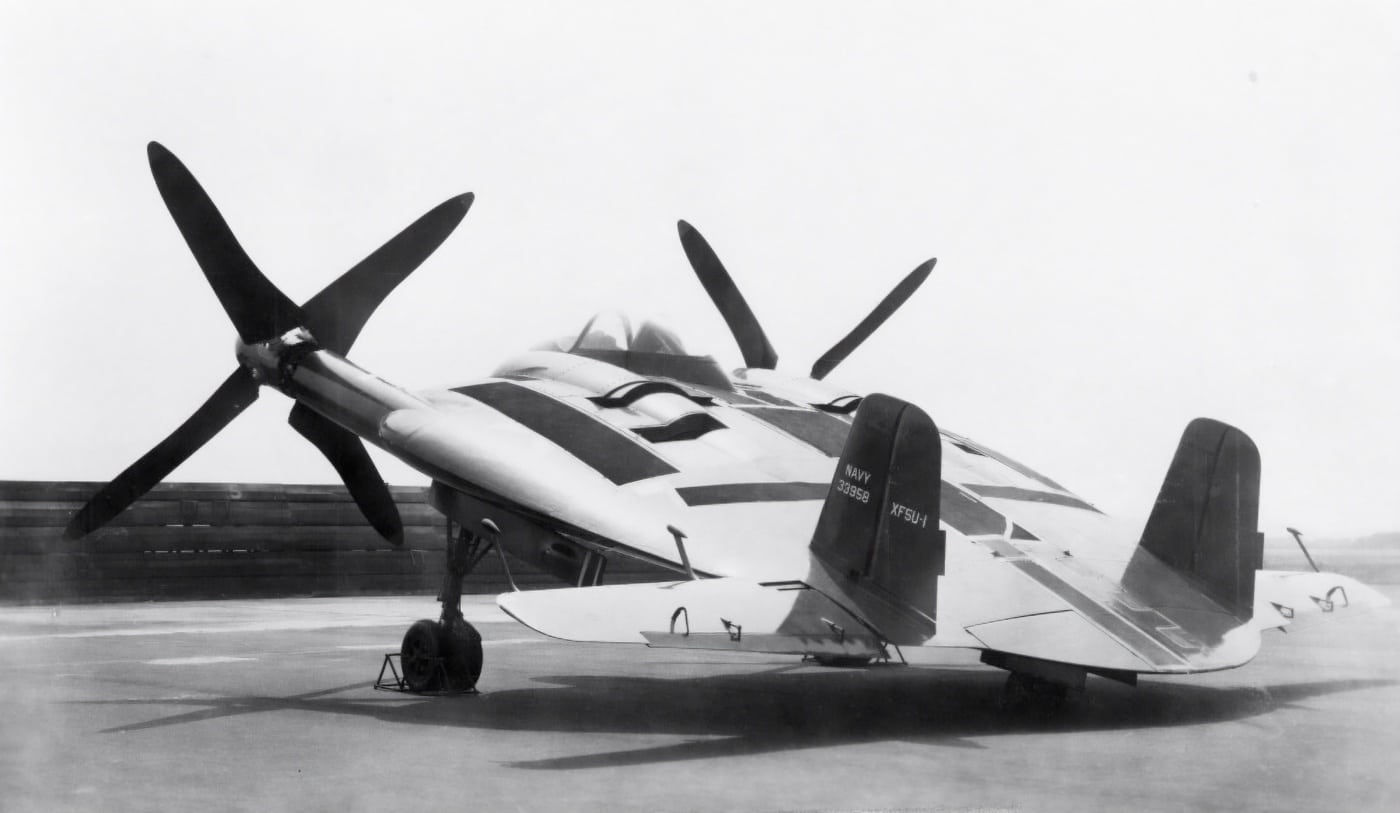
As WWII ended, the Navy faced decision-making time. With many bases closing, budget considerations, and the development of other aircraft equipped with turbojet engines, the program was canceled in March 1947.
Final Thoughts
The Vought V-173 was an unusual approach to the fundamentals of flight. While the program was ultimately unsuccessful, it was certainly educational and expanded our understanding of flight dynamics. Other approaches that substantially increase wing surface — such as the Northrop YB-35, Horten Ho 229 and Northrop B-2 Spirit — use similar techniques and have proved to be successful.
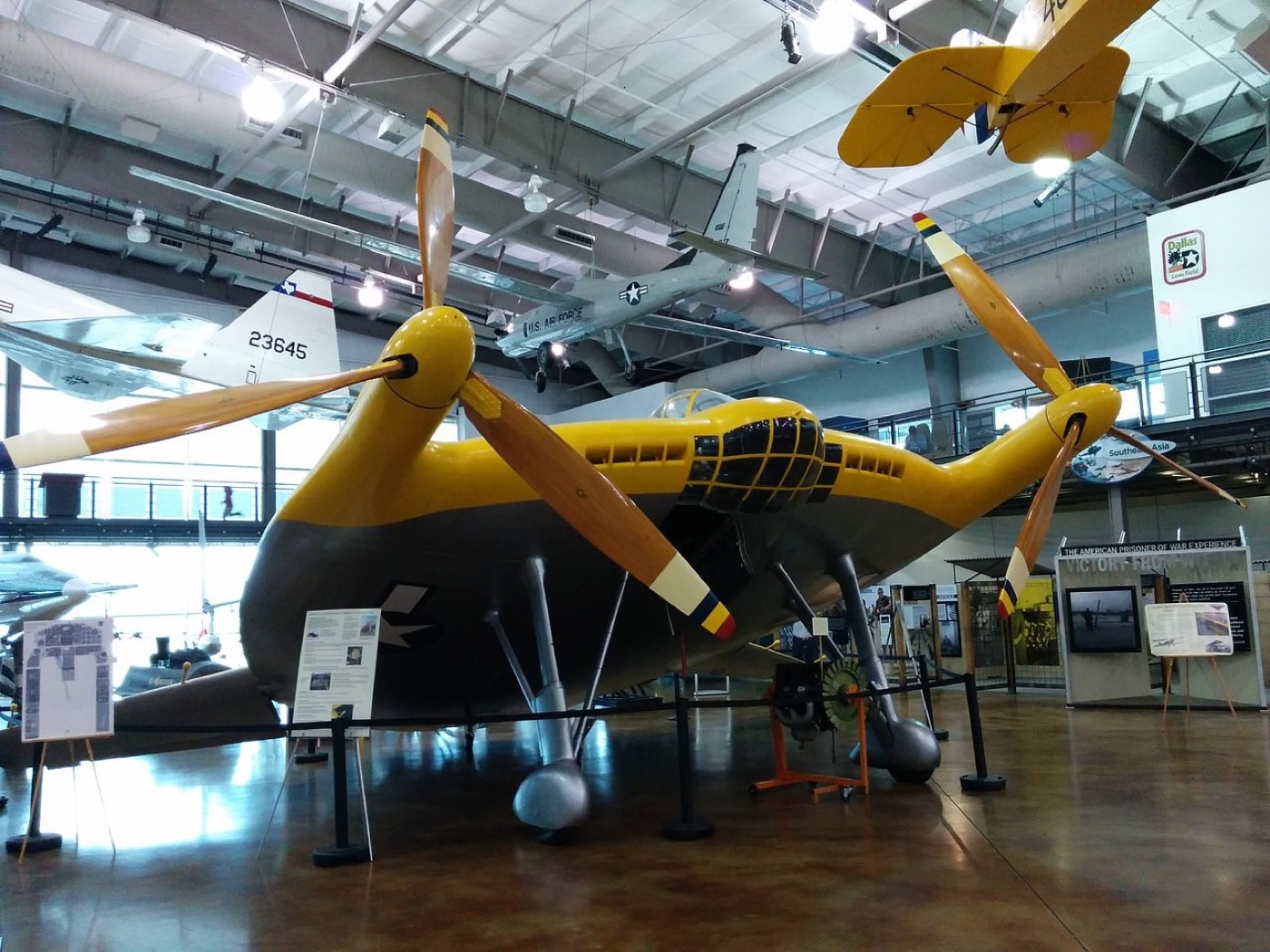
The V-173 was transferred to the Smithsonian Museum and, after an eight-year complete restoration by the Vought Aircraft Heritage Foundation Retirees, is now on display at the Frontiers of Flight Museum in Dallas, Texas.
Editor’s Note: Please be sure to check out The Armory Life Forum, where you can comment about our daily articles, as well as just talk guns and gear. Click the “Go To Forum Thread” link below to jump in!
Join the Discussion
Featured in this article
Read the full article here







